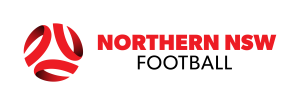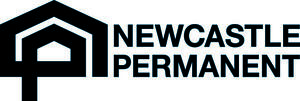Junior Development League
The Junior Development League is a way to provide talented junior players with the best possible learning environment. We do this through a specific skill acquisition program through clubs competing in the National Premier Leagues or the Hit106.9 Northern League One competitions.
The Junior Development League is non-competitive and focuses instead on individual skill development. This provides a pathway for potentially talented players to represent a club from nine to 12-years-old.
To include players from more regional areas, Northern NSW Football hosts a series of Junior Development League gala days in regional areas throughout the season.
2026 Junior Development League - approved clubs
NNSWF has approved clubs in the below table to participate in the 2025 Junior Development League.
| Club | Status |
| Adamstown Rosebud JFC | SILVER |
| Broadmeadow Magic FC | BRONZE |
| Charlestown Azzurri FC | SILVER |
| Kahibah FC | BRONZE |
| Lake Macquarie City FC | GOLD |
| Maitland FC | GOLD |
| New Lambton FC | SILVER |
| Newcastle Olympic FC | BRONZE |
| Valentine FC | GOLD |
Club | Status |
| Adamstown Rosebud FC | BRONZE |
| Belmont Swansea United FC | SILVER |
| Broadmeadow Magic FC | GOLD |
| Central Coast United FC | GOLD |
| Charlestown Azzurri FC | BRONZE |
| Cooks Hill United FC | GOLD |
| Edgeworth Eagles FC | GOLD |
| Kahibah FC | BRONZE |
| Lake Macquarie City FC | GOLD |
| Lambton Jaffas FC | GOLD |
| Maitland FC | GOLD |
| New Lambton FC | GOLD |
| Newcastle Olympic FC | GOLD |
| Northern Inland Rangers FC | BRONZE |
| Singleton Strikers FC | BRONZE |
| South Cardiff FC | SILVER |
| Toronto Awaba FC | SILVER |
| Valentine FC | GOLD |
| Wallsend FC | BRONZE |
| West Wallsend FC | BRONZE |
| Weston Workers FC | GOLD |
Frequently asked questions
To provide potentially talented players with the best possible learning environment through a specific Skill Acquisition Program delivered by clubs competing in NNSWF’s Premier Competitions. JDL is non-competitive and focuses on individual skill development. JDL provides a pathway for potentially talented players to represent a club from the age of 9 through to Seniors in the National Premier Leagues (NPL NNSW), Women’s Premier League (WPL) or Northern League 1 (NL1). JDL provides Premier Clubs with an opportunity to identify and develop players for the respective youth competitions as opposed to identifying players from u/12 community clubs.
Phase 1 was conducted at the Lake Macquarie Regional Football Facility (LMRFF) to enable NNSWF’s Technical Team to assess the skill level of players within teams as many times as possible in a centralised and controlled environment. The use of Football Five5 pitches was endorsed by Football Australia’s Technical Director. This approach enabled NNSWF to: • Complete 330 team assessments undertaken by NNSWF’s Technical Team to ascertain as accurately as possible the overall skill level of the players at each of the clubs. • Gather and benchmark data to guide future professional development sessions and the support provided by NNSWF Technical Advisors to Club Technical Directors (TDs). The use of the Football Five5 pitches (smaller pitch and less players) ensured that players got more touches, repeated the four core skills more often and increased the frequency of football decision-making.
NNSWF has assessed the data from 330 team assessments to appropriately group clubs for fixtures during the next 8 weeks. The placement of individual teams in pools may be considered in the future, however this approach is not supported by clubs due to logistical considerations including the capacity of Club Technical Directors to visit multiple venues on the same match day. This approach aims to minimise the prevalence of “blow-out” scores, which facilitate poor learning environments for all players involved. NNSWF acknowledges that some fixtures will still “blow-out”. NNSWF takes this opportunity to remind everyone that the JDL is a development league with the absolute focus on individual skill development. All premier clubs have been offered a licence to participate in the JDL. NNSWF does not distinguish between NPL and NL1 Clubs in the JDL. ALL clubs are JDL license holders and should not be distinguished in this phase as an NPL and NL1 club.
The JDL will be fixtured in three (3) phases in 2024.
This approach facilitates ongoing assessment of teams and club programs throughout the season and provides an opportunity for NNSWF to re-fixture the league on two (2) occasions throughout the season to better ensure clubs are engaged in matches that are at an appropriate level.
NNSWF’s Technical Advisors will be working with all JDL club TD’s throughout the season to provide feedback on their program delivery and to assist and support clubs to develop their young players.
JDL is for players within the Skill Acquisition Phase.
The focus of the Skill Acquisition Phase of football development is to develop each individual player’s four (4) core skills:
- 1v1
- Running with the ball
- First touch
- Striking the ball
Whilst games are an important element of player development, it is important that progress is not measured by results or team performance but rather the progress of each individual player.
It is clear that winning or losing by large score lines is not ideal. NNSWF has implemented a staged format to the JDL in 2021 to better manage the likelihood and frequency of large score lines, however eradicating them all together is something that we simply cannot guarantee.
The format of the JDL fixtures is based on club programs rather than individual teams, and age groups. This allows club TD’s and other technical staff to be present for all matches at the same venue to support players and coaches participating in all matches.
Clubs are provided with the opportunity to have a maximum of (two) 2 teams per age group. The JDL considers that clubs need to develop and identify a minimum of 16 players to transition to 13’s. There is no evidence to suggest that limiting clubs to one team per JDL age group will disperse talented players across all clubs.
The maximum number of teams was agreed to by clubs and confirmed as part of the JDL participation agreement.
JDL clubs have the option to submit all, some or none of the age groups or teams up to the maximum that they feel benefits their club and their players.

